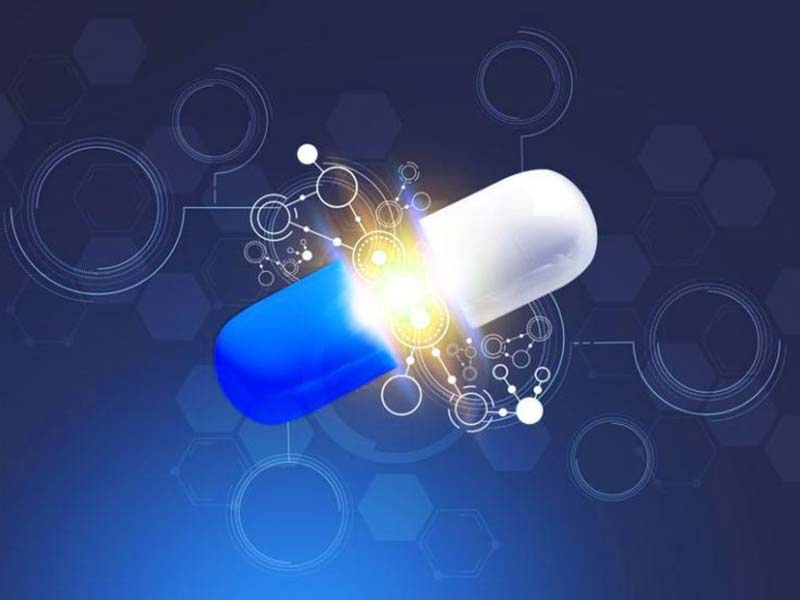In the process of digital transformation, pharmaceutical companies often feel that they have more energy than energy. In response to this situation, this paper proposes: through intelligent equipment, intelligent production lines, intelligent workshops, intelligent factories, etc., to integrate automation systems and information systems Integration, industrial network, and information security are the key points, and the automation-driven process of information flow is used to empower the digital transformation of pharmaceutical companies, so as to achieve the goals of ensuring stable drug quality, reducing labor costs, and alleviating environmental protection problems in the pharmaceutical industry.
In recent years, China’s pharmaceutical market has maintained a relatively high growth rate. This is because my country has a huge population base and has a huge demand for medicines; at the same time, with the improvement of people’s ability to pay and awareness of disease prevention, China’s demand for medicines continues to increase.
The pharmaceutical industry has high barriers, and has the characteristics of long research and development cycle, large cost investment, difficult technological innovation and high return and profit. At the same time, the pharmaceutical industry is a highly regulated industry, and all aspects of pharmaceuticals from research and development, production, distribution, sales and after-sales safety will be strictly supervised and controlled by the competent government departments. In recent years, the laws and regulations related to medicine have become increasingly stringent, and the establishment of a full life cycle tracking and traceability system for the entire industry is imperative.
Therefore, in the face of the strict requirements of laws and regulations, the huge potential of the market, and the cost pressure of drug listing, how to ensure the safety and effectiveness of drug quality, speed up the time to market of drugs, and improve the production efficiency of drugs through digital means has become the focus of the entire pharmaceutical industry. focus topic.
Part 1 Difficulties In Digital Transformation

The goal of digital transformation is to change the business process of the enterprise through the comprehensive application of digital technology in breadth and depth, complete the transformation and upgrading of the enterprise itself, and realize the improvement of the enterprise’s industry competitiveness, product innovation ability, quality control ability, operation management and control ability, etc. leap.
It has become an industry consensus that digital transformation must be carried out. However, the development cycle of pharmaceutical digital transformation is long and complex. During the transformation process, enterprises often feel that they have more energy than energy, and they usually face the following practical problems: insufficient digital transformation capabilities, high transformation costs, and talent reserves. Insufficient, transformation strategy is not clear. In this context, digitally reengineering all elements of the pharmaceutical industry chain will be the core proposition of its digital transformation and upgrading, with data as the core element, technology as the support, and production efficiency as the main line.
Part 2 Digital Transformation Path
The digital transformation process of pharmaceutical companies can be promoted in four steps:
The first is to develop medical intelligent equipment, realize on-machine detection, compensate for processing errors, and improve processing accuracy.
The second is to develop intelligent pharmaceutical production lines to realize data collection, real-time production status monitoring, online quality inspection, flexible production, and small-batch and multi-variety production modes.
The third is to develop intelligent workshops, collect and analyze production status, equipment status, energy consumption, production quality, and material consumption in real time, realize efficient production scheduling and reasonable scheduling, and build an MES/LIMS with the goal of process transparency and business collaboration system to realize the transparency of key data and business integration; establish a fine-grained management and control system to realize complete fine-grained process control and electronic batch records; partially build an intelligent plate to improve the overall digital and intelligent management and control level of production quality, and It is integrated in the enterprise Internet.
The fourth is to develop smart factories, using technologies such as the Internet of Things, cloud computing, and big data, combined with the upgrading of pharmaceutical processes and smart equipment, to gradually improve the level of intelligent management and control of the system, and realize the automation, transparency, visualization, and leanness of the production process. Realize product inspection, quality inspection and analysis, and closed-loop integration of production logistics and production process; expand horizontal, vertical, and end-to-end system integration, and finally build a complete intelligent manufacturing system.
Part 3 Analysis Of Key Points Of Digital Transformation
The automation of processes driven by the automation of information flow is the main feature of digital transformation, and the key to realizing the automation of information flow lies in the integration of equipment automation systems, information system integration, and industrial network and information security.
(1) Integration Of Equipment Automation System
When planning the automation system architecture, in order to realize data acquisition and centralized monitoring, not only the data interconnection between SCADA/DCS (Data Acquisition and Supervisory Control System/Distributed Control System) and equipment must be considered, but also the implementation of recipes through the S88 batch processing standard should be considered. Hierarchical interconnection, and provide higher convenience for integration with MES (Manufacturing Execution System). For the planning of the new factory, attention should be paid to the standardization of stand-alone equipment, including the interface used, protocol, data structure and data format, ERES (electronic record and electronic signature), clock synchronization function, etc. For the planning of equipment integration in old factories, different integration schemes should be proposed according to the status quo of the equipment control system, including access methods (direct access/network protocol conversion access/equipment automatic control system interface upgrade access), interactive data etc.

(2) Information System Integration
Taking MES as an example, pharmaceutical companies have many concerns when integrating, for example, will more quality problems be exposed when MES goes online? Can the operator adapt to the production operation mode of MES? How to propose a targeted URS (User Requirements Specification)? Can it be completed before the time node required by regulations? In order to eliminate these concerns, some specific requirements need to be put forward when planning MES, including: MES should have the ability to seamlessly integrate with SCADA/DCS; Code development; a professional consulting team should be selected before MES procurement, and a targeted and practical URS should be formed; MES should be implemented step by step according to importance, taking into account flexibility while ensuring compliance; owners should intervene in MES planning as soon as possible And participate in the implementation, which contributes to the successful implementation and smooth delivery of the project.
(3) Industrial Network And Information Security
It is necessary to consider the differences in network requirements at the equipment level, control level, production management level, and enterprise management level, and establish a layered or VLAN network architecture. The communication between the device level and the control level needs to have characteristics such as real-time, anti-interference and fast diagnosis, and this requirement can be met by restricting hardware requirements such as industrial switches, cables and connectors. With the increase of MES mobile terminals and mobile devices, it is necessary to build a wireless network with the layout of industrial-grade APs (wireless access nodes). In addition, in order to improve the maintenance efficiency of equipment under failure and emergency conditions, it is also necessary to plan a remote maintenance platform to realize the remote maintenance function. With the interconnection of systems, information will flow between production areas, office areas and the Internet. At this time, it is necessary to ensure network security and information security. It is necessary to plan a multi-level network security and information security architecture to prevent network storms and viruses. Various network security incidents such as infection, hacker attack, and illegal intrusion from the outside world meet the functional requirements of pharmaceutical companies for safe production.
Part 4 Benefits Of Transformation And Upgrading
Digital transformation can bring a lot of benefits to pharmaceutical companies. Specifically, there are the following four points:
It can ensure the stability of drug quality, reduce the influence of human factors in the production process, ensure the continuity and standardization of the production process of different types of drugs such as innovative drugs and generic drugs, and promote the integrity and traceability of the whole life cycle records;
Improve the international competitiveness of enterprises’ pharmaceutical exports;
Greatly reduce the rising labor cost, and gradually replace human labor with intelligent system control;
Alleviate the environmental problems of pharmaceuticals and promote the sustainable development of the pharmaceutical industry.
Part5 Epilogue
This paper discusses the digital transformation strategies of pharmaceutical companies, and puts forward intelligent paths such as equipment, production lines, workshops, and factories, focusing on automation system integration, information system integration, industrial networks, and information security, and initially utilizing the automation of information flow. Drive the process to empower the digital transformation of the pharmaceutical industry. It is believed that in the future, through the integration of big data, cloud computing, industrial Internet and other technologies, a visualized big data management platform integrating research, production and sales will be produced, which can display pharmaceutical companies in real time in terms of raw materials, research and development, operation, finance, quality, materials and Sales and other aspects provide effective decision-making basis for enterprises and realize smart factories under the fine control of multi-source data.










